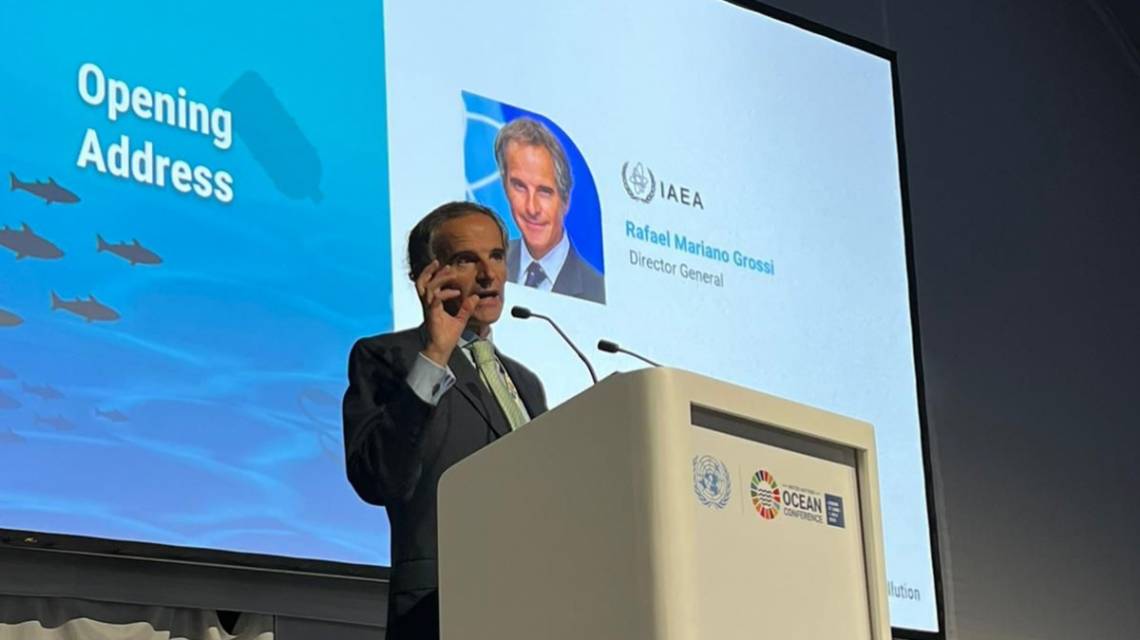According to the International Union for Conservation of Nature, at least 14 million tons of plastic end up in the ocean every year. That plastic makes up 80 per cent of all marine debris, which entangles animals and is ingested by marine species. Marine plastic pollution is a global threat, and according to projections, by 2025 the ocean will contain one tonne of plastic for every three tonnes of fish. By 2050, there may be more plastic in the ocean than fish. This environmental issue transcends national borders and therefore requires a truly global partnership that cuts across countries and organizations, IAEA Director General Rafael Mariano Grossi said today.
“Plastic pollution is one of the major environmental challenges of this century and greatly affects land, waterways, and oceans. No country can adequately address this challenge alone,” Mr Grossi said at a side event organized at the 2022 UN Ocean Conference in Lisbon, Portugal. “Now is the time to commit to a more enhanced global approach against plastic pollution that includes joint action and decision-making based on the latest and most innovative science available.”
Highlighting the IAEA’s initiative, Nuclear Technology for Controlling Plastic Pollution (NUTEC Plastics), launched last year, Mr Grossi emphasized that nuclear applications could help both in the ocean and on land. NUTEC Plastics is dedicated to helping countries use various nuclear techniques to provide science-based evidence to characterize and assess marine microplastic pollution, while also demonstrating the use of ionizing radiation in plastic recycling by transforming plastic waste into reusable resources.
“Nuclear techniques can help us assess and understand the dimension of our marine plastic pollution problem, including identifying the nature and the amount of plastic waste floating in the ocean,” Mr Gossi said. “Nuclear can also play a role in reducing the amount of plastic that lands in the ocean: recycling through radiation techniques will allow us to produce materials that can be used in other ways.”
Now is the time to commit to a more enhanced global approach against plastic pollution that includes joint action and decision-making based on the latest and most innovative science available.








